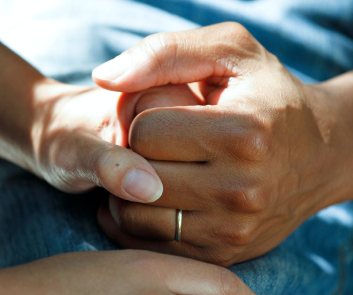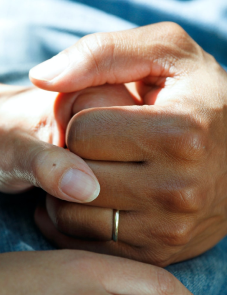The ritual of holding a funeral for a loved one that has died is one of the most important medicines for grief. Making time to mourn with friends and family is vital. But a religious funeral can come across as inauthentic when the person who died wasn’t religious.
Humanist funerals are non-religious ceremonies that acknowledge and support the grief of survivors, celebrating the person they have lost, their legacy, and the relationships they forged. The humanist approach appreciates that everyone experiences grief differently and that every life is unique and valuable.
Thousands of humanist funerals are celebrated every year and the demand for these kinds of services is increasing. With the help of a funeral director, you can create the best kind of ceremony to pay homage to your loved one. You can also pre-plan your own funeral, however early or uncomfortable that might sound, so that the burden doesn’t fall on your loved ones.
Planning a humanist ceremony doesn’t need to be complicated. Here is everything you need to know.
Who arranges a funeral ceremony?
A celebrant will guide you through all the steps of arranging the funeral ceremony you envision. Celebrants are highly empathetic and sensitive people with experience in bereavement, who endeavour to learn as much as possible about the person who has died and create a funeral that pays tribute to them in a heart-warming way.
The celebrant connects with those close to the person who died, either in person or through a telephone or video call, to work towards creating a unique and special ceremony. They also help the bereaved with practical matters, such as the duration of the ceremony and alternative ways of holding it when it cannot be attended in person. As well as listening to your ideas about readings, music or other symbolic gestures, they share their own ideas to personalise the occasion and liaise with everyone involved to ensure that the ceremony will run smoothly. They are the person who provides a final script and who gently and warmly leads the service on the day.
What is a typical humanist ceremony like?
While every humanist ceremony is unique to convey the personality and life of the person that has died, most follow a similar structure. They usually take place at a crematorium or cemetery but can be held anywhere you desire. The ceremony might start with a moving piece of music (which can be mournful or celebratory), followed by words on life and death and a reflection on the life the person lived. A family member or close friend might then read a meaningful poem or prose. Usually, there is then a moment of silence for some private thoughts on the person who died. The coffin is then closed, or the coffin lowered before some closing words and final music.
Why should I plan my own funeral?
You might not see why planning your own funeral should be at the top of your priorities. It might seem way too early or uncomfortable. But a pre-planned funeral can give you great peace of mind: you can make your final wishes known and allow your loved ones to attend your funeral without the financial burden or any disagreements about how the funeral should take place. Planning ahead can feel very reassuring.
In collaboration with a funeral celebrant, you can plan all the details of how you envision your funeral: whether you’ll be buried or cremated, what music will be played, whether it will be religious or not, what you will wear and what poems or texts will be read. A celebrant will also suggest how to make your ceremony a meaningful one. All information regarding your pre-planned funeral is securely stored and will be conducted either by the celebrant you created the script with or with another accredited funeral celebrant.
For more information, you might like to check out Humanist Ceremonies, and speak to a humanist celebrant to find a ceremony right for you and your loved ones.





